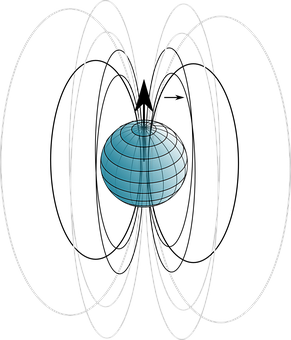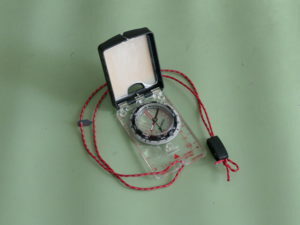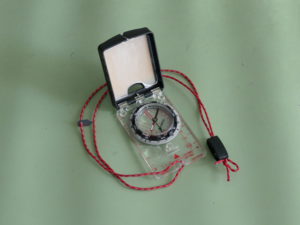Can you navigate by map and compass?
In a previous post, I described in great detail, the ten essentials that I consider must-haves in a wilderness survival kit. All of these 10 essentials can be found on any list of every seasoned professional.
I will demystify this little known but necessary wilderness skill. Your ability to navigate with map and compass will grow your confidence and enrich your outdoor experience.
In any scientific study, a proper description of the vocabulary and nomenclature is essential. To learn navigation, we must begin by defining what navigation is.
What is Navigation?
Navigation is the art or science of plotting and directing the course of a ship, an aircraft, a guided missile, or a human being.
In your case, it is plotting a course to follow so that you can arrive at the destination of your choosing. Let’s begin with 10 definitions you must know.
10 Navigation Terms You Need to Know
This is a list of 10 terms that you need to know to begin your study of navigation by map and compass.
These are not the only terms you need to learn, but they are an important ten that you have to comprehend to move forward and feel comfortable in your study of Navigation.
In learning any new skill, no one aspect is more important than the other. They all form part of the whole so I present these terms in no specific order of importance. They are all part of the Map and Compass Navigation Basics.
What? … 3 different Norths!
Yes Billy, 3 different Norths!
1 … True North
Let’s begin with True North. This is the most important North. It is also known as Geographic North. This is at the top of your map. Lines of longitude run in a north-south direction.
These vertical lines describe the left and right margins and are the true meridians.
These meridians converge towards the poles, and although they appear to be parallel on your map, the closer you get to the poles, the less parallel they become.
2 … Grid North
All topographic maps have grid lines on them. These are interconnecting lines superimposed over the face of all topographic maps.
The vertical grid lines are the lines of longitude. These lines are the true meridians.
They are now parallel lines on your map because the “round” Earth has been placed on a flat surface.
The horizontal lines are the lines of latitude.
3 … Magnetic North

Your compass needle does not point to true north.
It points to magnetic north, which is located several hundred miles south of the real thing.
4 … Latitude
Lines of latitude are the horizontal lines on your map or globe.
These lines are always parallel and are measured in degrees North and South of the Equator.
The Equator is 0° and 90° at the North and South poles.
The latitude of the North Pole is 90° N, and the latitude of the South Pole is 90° S.
5 … Longitude
This is the distance in degrees east or west of the Prime Meridian which passes through Greenwich, England.
These lines of longitude are known as Meridians and run True North and South.
Longitude is also expressed in degrees ranging from 0° at the Greenwich or Prime Meridian to 180° East and 180° West.
6 … Contour Lines
These are the light brown lines on your topographic map and they indicate elevation above mean sea level.
From these contour lines, you can see the valleys and hills on your map area.
The closer the lines are the steeper the area.
When the contour lines are further apart the land area is much flatter.
7 … Declination
This is the angular distance measured in degrees East or West of True North.
It is the angle in degrees, between True North and Magnetic North.
This angle varies depending on your position on the Earth’s surface and also varies with time.
All topographic maps have a declination value diagram. This will indicate the Year and the Annual Change increasing or decreasing, expressed in degrees.
8 … Bearing
A bearing is a direction in degrees on the compass circle, from where you are standing to where you are going.
It is the reading in degrees east or west of a north-south reference line.
A bearing will be expressed as North or South and includes an angle value which is always less than 90°.
For example, if Point B is located exactly southwest of Point A, the bearing from Point A to Point B is S 45° W.
9 … Scale
This is the relationship between the distance on the ground and the distance on the map.
It can be expressed as 1: 125 000.
This means that 1 centimeter=1.25 kilometre.
10 … Inclination
The Earth is a gigantic magnet and the closer you get to the poles the greater this magnetic force is. This increase in magnetic force affects the compass needle.
For instance, in the Northern Hemisphere this causes the North end of the compass needle to tip down and it causes it to rise in the Southern Hemisphere.
This is why professional grade compasses have NH, SH, or Global designations. This NH designates a compass for use in the Northern Hemisphere. SH is a compass for use in the Southern Hemisphere, and the Global version is for use in both hemispheres, hence, the Global designation.
If you live in North America, as is my case, choose an NH version of the orienteering compass.
The Global compass uses mils (mil-radians) for direction and it is more complicated for beginners trying to learn navigation by map and compass.
Your compass needle has to be balanced for the area of operation that you will be using it in so that the compass needle can spin freely on its pivot.
In Conclusion
These are only 10 terms that form part of the language of Navigation. I will be expanding this terminology with more blogs and more definitions. Keep in touch to build upon these terms and improve your use of the map and compass.
The field of navigation is divided into four general categories: land navigation, marine navigation, aeronautic navigation, and space navigation.
In the broader sense, Navigation is the skill of determining position and direction and using it to successfully reach your destination.
Comments, Questions, and Suggestions
If you have any comments, questions, or suggestions, about navigation or the map and compass, please do not hesitate to Contact Me.
What is the most difficult part of navigation for you to understand and how could I shed some light on it for you?



Dear Paul,
This was very insightful and I can tell you I have taken some great insights from this post.
Every month as a team we go for camping so your post means a lot to me. You have given me plenty to think about here. This article is so thorough it opened my eyes to all sorts of information I wasn’t aware of!
I missed your previous post “10 Essentials for Wilderness Survival-are you prepared?” and I read it now and found it super helpful. I shared your post with my camping team for sure they gonna enjoy it and will find more value.
I am bookmarking it for future reference.
Best wishes to you, your family and your success,
Warm RegardsPaul
Thanks.
Your parents have chosen a great name for you!
I am happy to hear about your monthly camping trips, and that you have also read a previous post.
I would love to hear about your camping adventures.
Paul
Thank you for this great post, you have really provided great insight into this and I really appreciate that. I can’t agree more with the navigation terms you have talked about. I did high school geography and I am familiar with most especially how to calculate longitude and latitude. I really enjoy reading.
Thanks, Clement.
Map and Compass is an essential wilderness skill that can remove “survival” from the equation.
There isn’t any mystery to it. Simply learn the basic terminology and the techniques and that’s it!
Geography was one of my favourite subjects as well.
So much to learn and enjoy in the great outdoors.
Paul